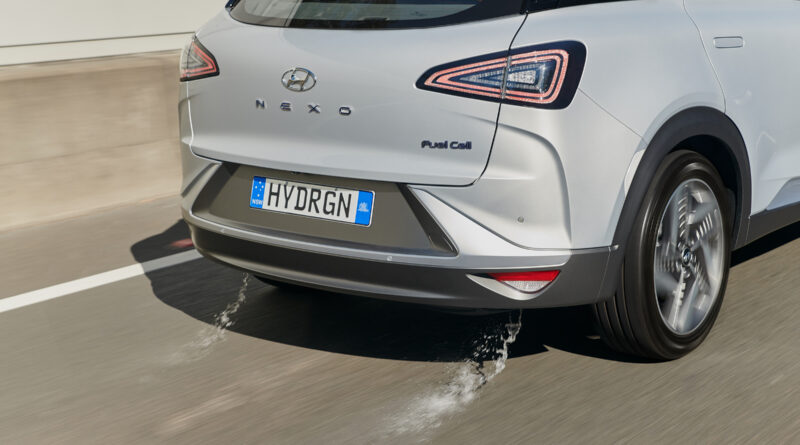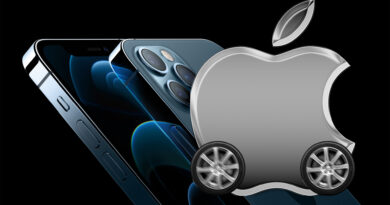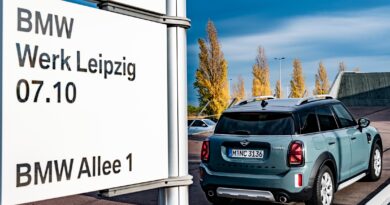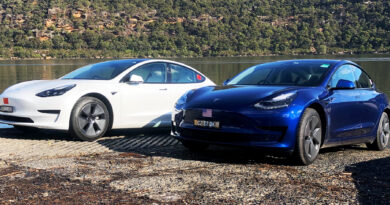Water tight: Hyundai Nexo could be the start of big H2 things
You can’t buy one and there’s currently only one publicly available refueling station to top it up in Australia, but the Hyundai Nexo hydrogen fuel cell EV (FCEV) could be a game changer for Australia.
The first 20 Nexos are now in use by the ACT Government – an EV convert that says it costs no more to own and run and electric car than it does an ICE – where nurses and other public servants will drive them in and around Canberra as part of a leasing deal.
Read our review of the Hyundai Nexo FCEV.
With a claimed 666km range from the 6.33kg of hydrogen held in three tanks hidden underneath the back seats, the Nexos are expected to be refueled about once a week, depending on usage.
And they’ll theoretically be able to drive to Sydney and back on a single tank.
Using the electric motor from the Hyundai Kona Electric and a small 1.56kWh battery pack from the Hyundai Ioniq Hybrid, the Nexo delivers the EV driving experience without needing to wait hours to recharge.
But hydrogen has its own very real challenges, the most prominent of which is where to refuel.
For now, refueling is done at the ActewAGL site in an industrial estate at Fyshwick, about four kilometres from Parliament House.
The strategically chosen site is close to an Australia Post and StarTrack Express depot, where it’s hoped delivery vehicles and forklifts may take advantage of the newly-opened station that creates its own hydrogen on-site from renewable electricity and water.
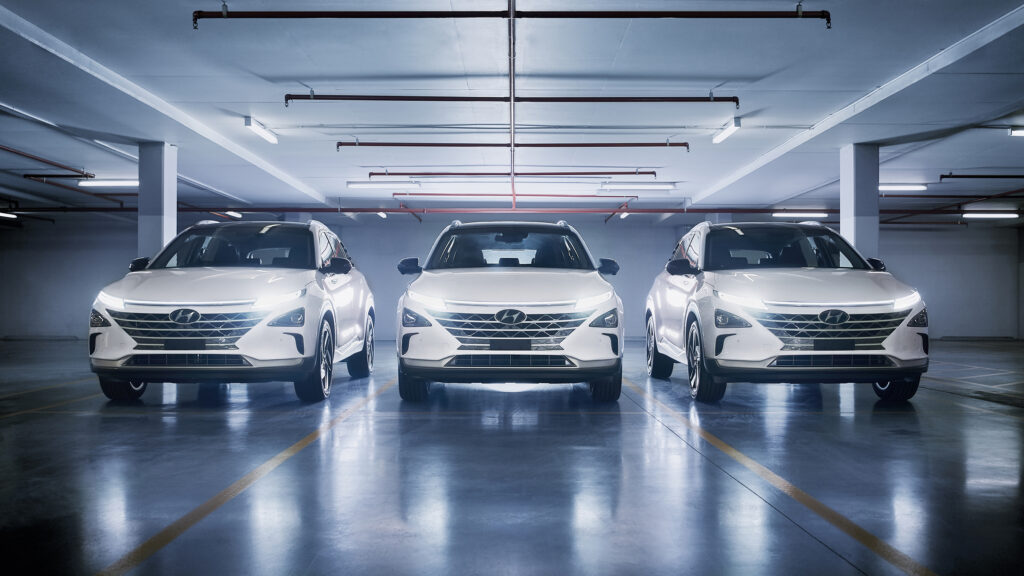
More sites are planned in the ACT and across Australia – about 10 in total – although it’ll be many years before Australia has anything like the coverage from the circa-7000 petrol stations dotted across the continent.
Still, Hyundai says the Nexo’s arrival is a big deal.
“We are launching more than just a car,” says Dr Saehoon Kim, Hyundai’s global head of fuel cell centre in announcing the Nexo trial program.
“The program might be small, but the significance is large.”
Dr Kim encouraged the Australian Government to embrace the increasing global interest in hydrogen.
“Your great country is one of the world’s leading exporters of coal and gas … but now maybe instead of looking under the ground it’s time for Australia to start looking towards the sky.”
While mountains of torque mean EVs can easily tow trailers, they can’t generally do it for too long, falling way short of the driving range offered by diesel engines that have traditionally lugged boats, caravans and horse floats.
That’s where Hyundai believes FCEVs can play a role.
With refuelling times of 3-5 minutes, the potential is there for hydrogen to allow electric towing and long-distance touring all over the country.
“Everything we see running on petrol today will more than likely be EV in the future, everything running on diesel today will more than likely be fuel cell in the future,” says Scott Nargar, Hyundai Australia senior manager of future mobility and government affairs. “In between with large utes and pick-ups and other things, they’ll be a combination of one or the other [hydrogen and EV].”
Commercial vehicle operators are seen as key to the development of hydrogen EVs. With known routes and larger duty cycles than private buyers, they can help encourage investment in the all-important refueling infrastructure.
Not that Hyundai is ignoring private buyers with the Nexo; Australia’s chief scientist Alan Finkel – who led the National Hydrogen Strategy in 2019 – is apparently keen on one.
While fleets and governments are the early target, private buyers will also be considered depending on where they live and how they plan to use the cars. For now, the Nexo can’t be bought outright, with lease deals favoured so the company can control where cars end up and monitor usage.
Hyundai says Australia is perfectly positioned for hydrogen – and not just for our own use and to potentially deliver us energy independence.
Hydrogen exports are emerging as a potentially big earner for Australia – one some believe could ultimately replace coal and gas.
“A lot of our neighbours to the north are asking for Australia’s clean energy … they’re buying our energy now, they’re all asking for it to be clean,” says Nargar, pointing to the suitability of Australia for creating vast quantities of hydrogen.
A Geoscience Australia study showed big areas of suitability for hydrogen production around Australia.
“If you look at the CSIRO heat and wind maps and overlay them,” says Nargar. “There’s no better place in the world to get the same overlaps of wind and solar in the same location around our West Australian coastline, South Australia, most of Tassie … Victoria and New South Wales and most of the way up Queensland.”
Not that hydrogen is getting a free run. As the very real infrastructure challenge provides a big early barrier to fuel cell EV take-up, the more established EV market is working on improving battery energy density – allowing smaller, lighter batteries to hold more charge – and vastly faster charging times.
That’s one reason some believe BEVs make more sense than FCEVs.
But there’s a good chance hydrogen will play some role in the inevitable shift to zero emissions motoring.

